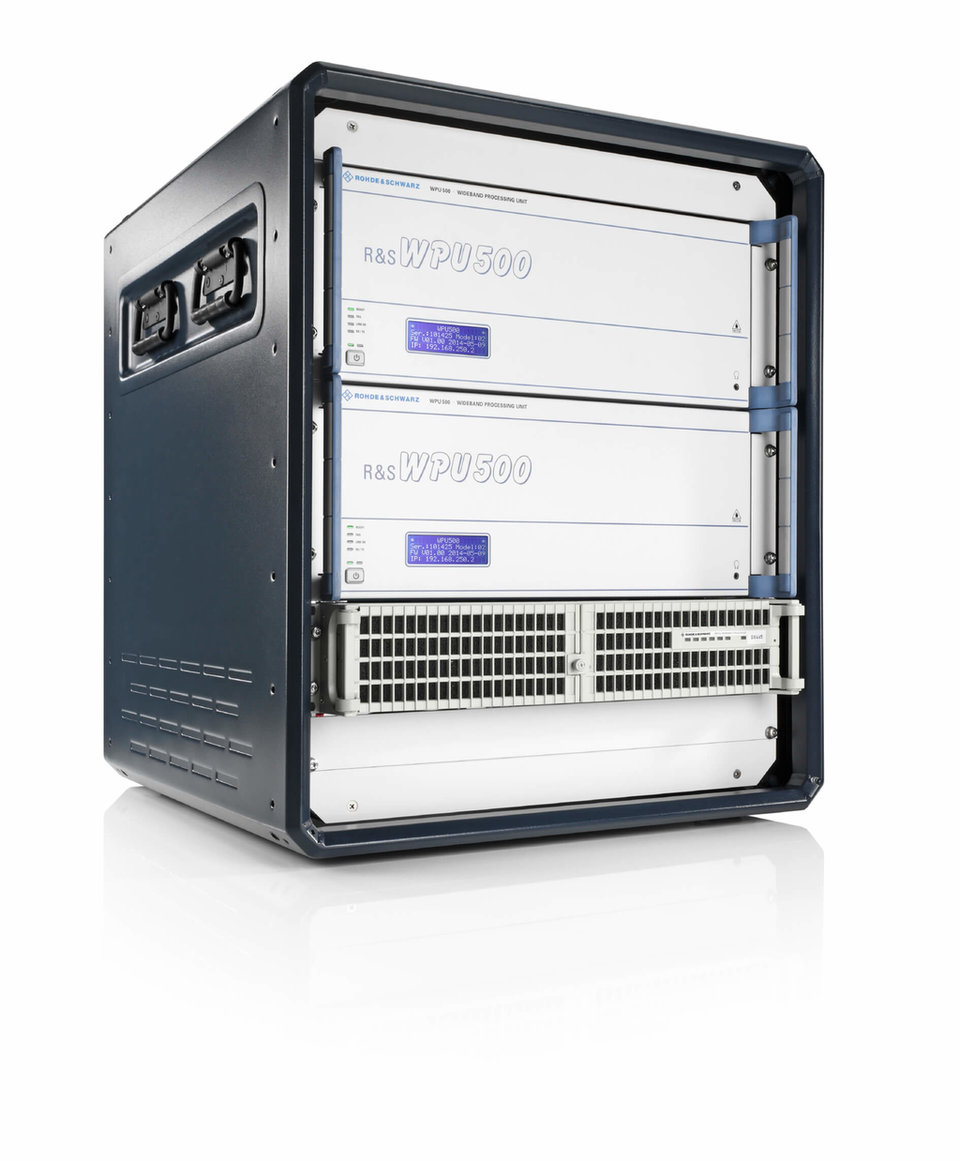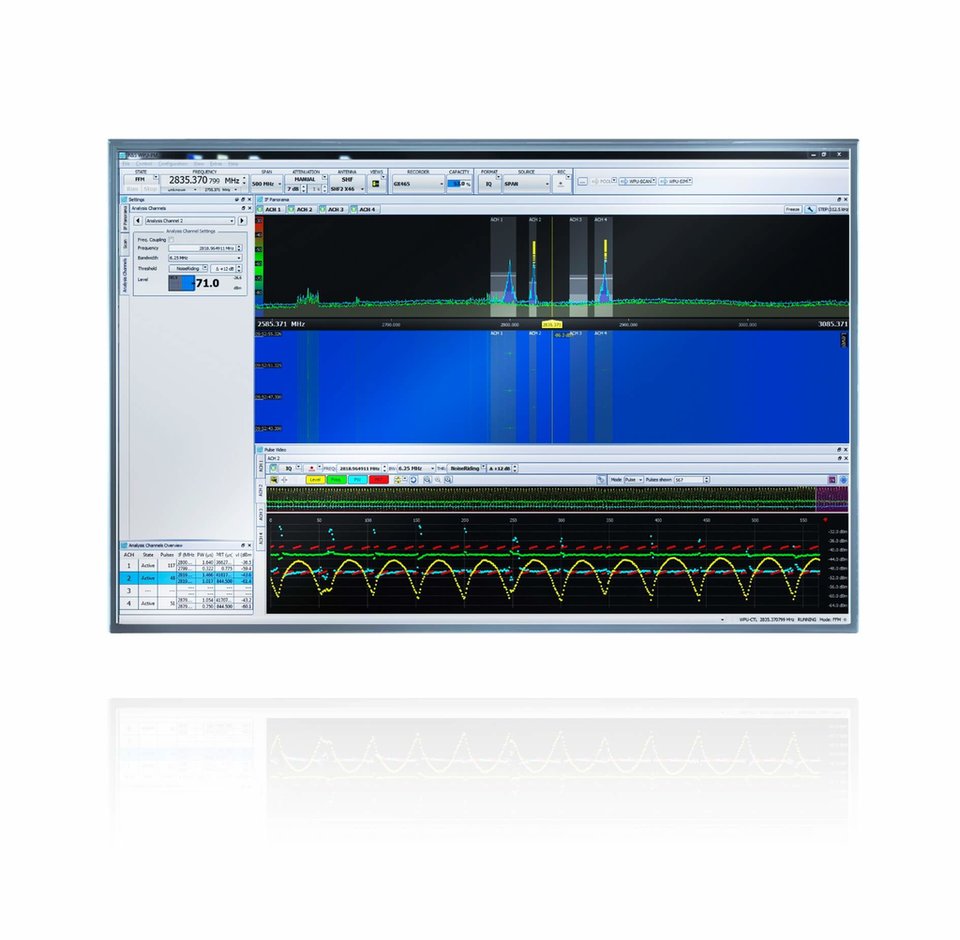company insight
Challenges faced by the ELINT and Electronic Warfare communities
ELINT/ES systems exploit signals intercepted from target radars that are continually evolving and becoming more complex. They process high and low power signals from the same bandwidth and as well as advanced radar waveforms. New concepts that provide improved intelligence and intentions and warning are required to meet this challenge.
To provide the information required to support frontline commands, ELINT/ ES systems must be able to intercept target radar signals and produce data of a high enough quality to measure parameters accurately enough to identify the target.
Over the past decade the effectiveness of ELINT/ ES systems has been eroded due to advances in radar technologies. Historically, ELINT/ES systems used instantaneous frequency measurement typically providing a capability between 2-18 GHz. Such systems have a relatively low sensitivity, around -55dBm one result is they are blocked by high energy signals.
A solution to this problem could be the use of narrowband receivers to increase sensitivity and selecting specific targets of interest from the spectrum avoiding high-power transmissions. However, some modern threat radar systems use wide transmission bandwidths, modern radars are capable of transmitting over bandwidths wider than 1 GHz. Narrowband intercept systems will not always able to collect the complete signal as they are bandwidth limited.
Other features of modern threat radars is that they can use pseudo-random radio frequency (RF) agility transmitting on multiple frequencies simultaneously. This can cause a pulse-on-pulse problem for the interception receiver. When a number of radar pulses are received simultaneously, the pulse that has the highest energy at an instant in time is processed. This causes pulse collisions or "dropouts" in the collection system. When this happens, incorrect emitter processing is often the result.
Products Built on Open Architecture Standards
Food supplies shipment

This effect increases when a number of radars of the same type are found in the same operating area—such as in a maritime task group. Not only do these radars have a high duty cycle, but the pulses they transmit are long high-energy pulses. In some instances, the energy in the, received pulses is enough to overdrive the analog to digital converter in sensitive intercept receivers. When the receiver is overdriven, the spectrum is destroyed and the ELINT/ES system cannot detect target transmissions.
This is not the only challenge faced by modern ELINT/ES systems. It has become apparent in recent years that there has been a
significant increase in low probability of intercept (LPI) radars. LPI can be used to describe a radar that an intercept receiver cannot detect or process for any number of reasons, not just due to low transmission power, it is possible to detect and process both solid-state radars and FMCW radars with a modern digital narrowband receiver.
The real challenge for ELINT/ES receivers occurs when a high-power radar is found in the same bandwidth as a low-power radar. When this happens, the high-power radar can overdrive the receiver, this is compensated for by adding attenuation. The result is that as the dBs are added, the noise floor rises and the low-power signal is lost in the noise and cannot be processed.

Due to the complexity of modern radar waveforms, when the operator is confronted with an unknown radar signal, there are two options. Option one is to report an unknown radar, which is often the case if the ELINT/ ES system is not able to record, store and analyze the target radar data. Option two is to make a recording of the signal and replay the recorded data into analysis software for further analysis to try to identify the radar, or its capability. The second option is only possible if the collection system has a flexible recording solution that can deal with the target of interest. It is essential that ELINT/ES systems contain powerful analysis tools that are not only capable of handling long, complex RF/ pulse repetition interval (PRI)/partial discharge (PD) patterns associated with modern radars, but also the waveforms associated with FMCW radars. Modern pulsed radars can use very long cyclic lengths or long frame structures. Within these structures, it is not unusual for a radar to use interleaved PRI waveforms where dwell/switch patterns or long periods of a constant PRI are regularly interleaved with stagger sequences.
The use of long complicated PRI structures has also been accompanied by PD agility and changes in intrapulse modulation types. Radar systems now use a variety of non-linear waveforms, which are difficult to identify. Binary phase-shift keyed pulses (BPSK) are still relatively common, but some radars are now increasing their use of quadrature phase shift keying (QPSK).
As the capability, complexity and diversity of modern radars increases, it naturally follows that the intercept and processing capability of ELINT/ES systems has to improve.
Rohde & Schwarz ELINT systems feature highly sensitive, multi-channel ELINT processors as well as powerful analysis software and digital I/Q recording solutions. They are specifically designed to operate in the modern dense radar environment and have been developed by ex-operators and engineers with years of experience in both the ELINT/ ES and digital receiver world.
SigFrontTM RF Analog Up/Down Converter Products
The SigFrontTM product family offers high fidelity analog up/down converters with multiple IF bandwidth options. The up and down converter functions are supplied as individual products that cover two separate RF bands; 1 MHz to 3.9 GHz and 100 kHz to 6 GHz.
The 3.9 GHz RF converter is equipped with a 70 MHz IF center frequency and a 10 MHz, 18 MHz, or 40 MHz bandwidth. The 6 GHz RF converter has a programmable IF center frequency that can be set from 1 MHz to 500 MHz with a bandwidth of 80 MHz or 160 MHz.
Comprehensive Radiation Lab and Test Services Division
Contact details:
| ROHDE & SCHWARZ |